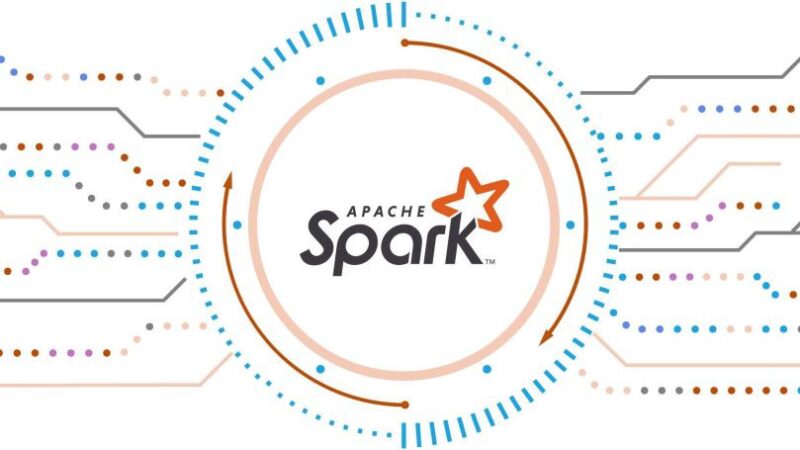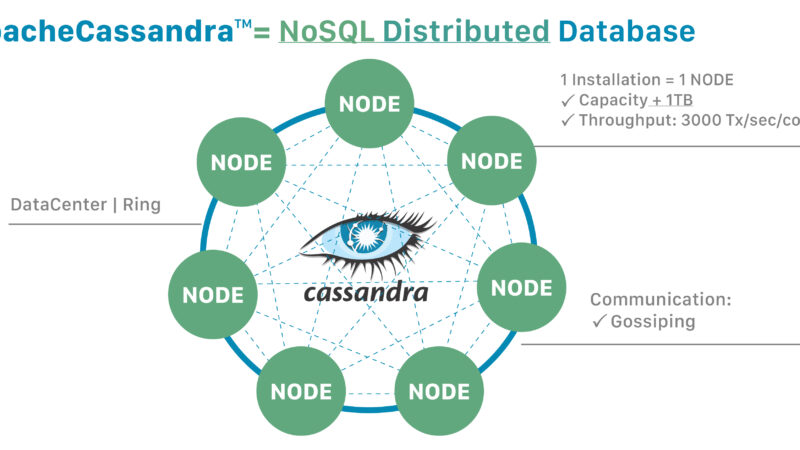Best DynamoDB interview questions for experienced candidates

DynamoDB is one of those databases proven to be wonderful and reliable. Many companies are shifting from typical SQL databases to such NoSQL databases. As their popularity increases, new jobs keep popping up. Suppose you have spotted such a job but have no idea how to convince them that you are the best candidate for the job, no more worries. We have compiled the best DynamoDB interview questions for experienced candidates. Besides questions, expect their respective answers because we understand that knowing the questions to expect isn’t enough to earn you the job. It would be best if you also answered them correctly; this piece is a must-read. So, keep reading t prepare perfectly for your DynamoDB interview to increase your chances of emerging as the best-experienced candidate.
What is DynamoDB?
It is NoSQL cloud-based database, and its provider is Amazon. This reliable, scalable and fully managed database is suitable for storing and retrieving any amount of data. It is ideal for web and mobile activities since they require low latency and high performance.
Differentiate between Indexes and Secondary Indexes in DynamoDB
An index in DynamoDB is a data structure that improves the speed at which one retrieves data from a database. It is important to note that maintaining an index data structure comes at a cost. For instance, it needs more storage space and extra writes to a database. There are two types of this data structure, namely;
- Local secondary index: Thanks to local secondary indexes allow one to query data using an alternate key, usually different from the one you used when storing the data in that table. Therefore, it is an ideal approach when intending to query the data in various ways or to facilitate various ways of viewing the data by users.
- Global secondary index: These indexes are created in a table but aren’t its primary key. Consequently, you can query the data in that table across various partitions. They come in handy when a single partition key isn’t enough to run a particular operation.
On the other hand, secondary indexes facilitate the storage of attributes’ sub-group from a table. It allows query functionality using alternate keys.
How would you scan large amounts of data in DynamoDB efficiently?
The most effective approach would be to use its Query API. DynamoDB Query API allows you to specify several aspects, thus enhancing efficiency. They include the table to query, the attributes to return and the circumstances under which the return can be returned. It enhances efficiency further by allowing you to limit the returns.
What’s the role of conditional writes in improving the performance of DynamoDB?
As the name suggests, conditional writes revolve around specifying the conditions that must be met during writing operations for successful writing. It avoids things likely to compromise the performance of DynamoDB, such as duplicating data. Can you imagine a situation where more than one process works on the same thing? That often results in overwriting data that’s already updated following another process. Again, conditional writes avoid such instances, thus enhancing how the DynamoDB performs.
Tell us about the eventual consistency model in DynamoDB
It is a method responsible for updating every copy of any data item. The eventual consistency model is suitable for managing distributed systems. After all, changes take considerable time to reflect on all its nodes. That doesn’t mean that the method eliminates the waiting time. On the contrary, its role is only to ensure that no copy isn’t updated as long as the process gets ample time to do so.
Define provisioned throughput in DynamoDB
It is a DynamoDB feature that facilitates specifying the read and write capacity of a certain table. Once set, it helps ensure that that table will manage a certain amount of traffic seamlessly.
Differentiate between a partition key and a sort key in DynamoDB
One common thing between partition and sort keys in DynamoDB is the important role they play when querying items in a table. That said and done, their specific roles are different. A partition key determines the partition to store a data item, whereas a sort key determines the order of the data items stored in the partition.
How well do you understand data pipelines in DynamoDB?
They are responsible for importing and exporting data from other files and databases. It is also useful during testing and backup. There are two categories of data pipeline which are;
- DataPipelineDefaultRole: It contains every action that a pipeline is allowed to perform
- DataPipelineDefaultResourceRole: It contains every resource that you allow the pipeline to use
Highlight some APIs that DynamoDB provides
They include;
- Scan
- Query
- DeleteItem
- UpdateItem
- ListTables
- DescribeTable
- DeleteTable
- UpdateTable
- CreateTable
What about the various DynamoDB data types?
They are classified into three, namely;
- Document: The data types represent complex structures comprising nested attributes, and excellent examples include maps and lists
- Scalar: These data types represent single values
- Set: The data types represent several scalars simultaneously
Document data types include
- Lists
- Maps
Scala data types include
- Number
- Binary
- String
- Boolean
- Null
Set data types include;
- Binary set
- String set
- Number set
Discuss the DynamoDB Mapper class
It is the primary access point to its database. Upon gaining its access, users will be in a position to enter records and run queries in different tables.
What are your options when fetching data from the DynamoDB database?
There are 5 ways which include;
- TransactRead
- BatchBet
- Scan
- Query
- Getltem
Explain how DynamoDB differs from MongoDB
The differences between the two include the following;
- Whereas the designer and developer of DynamoDB is Amazon.com, MongoDB Inc. is MongoDB’s designer and developer
- DynamoDB uses items, tables and attributes, but MongoDB uses documents similar to JSON
- If you want an easy time setting up and installing a database, DynamoDB is your ideal choice. On the other hand, MongoDB is hard to configure and install due to a lack of documentation.
- When using DynamoDB, expect to deal with small item sizes and a few data types and vice versa is true if you use MongoDB.
- The security of DynamoDB is on another level, and AWS applies the necessary security measures to guarantee that. As for MongoDB, security leaves a lot to be desired. For example, the authentication is usually off by default as you install MongoDB.
Which methods do the DynamoDB Mapper class use?
- Save: It is responsible for saving a certain object to a table
- Delete: It will delete an item from a table
- Scan page: It will scan an index or a table before returning a corresponding result page
- Batch save: Unlike its save counterpart, this method can save an object to more than one table
- Load: It will retrieve an item from a table
- Query: It will query an index or a table
- Parallel scan: It is similar to the scan page method but affects the entire index or table
How does DynamoDB differ from an SQL database?
First, Dynamo is a NoSQL database, which summarizes how it differs from an SQL database. As for an SQL database, its synonym is a relational model database. Besides storing data in a table, it will divide it into columns and rows. It further defines the two and other database elements, such as the relationship between tables and indexes. On the other hand, a DynamoDB, a NoSQL database, uses other models, including graphs and key-value documents, for data management and retrieval.
How does the speed of DynamoDB compare to that of Redis
Inserting and deleting an item from DynamoDB is quite fast because it is a NoSQL database. It is also important to note that it stores the data permanently. However, Redis is faster than DynamoDB but don’t shy away from the latter since its speed is also reasonable and sufficient.
Define Encryption at Rest
As the name suggests, it is a security measure ideal for protecting sensitive data available when using DynamoDB. The database service applies the AWS Key Management Service (AWS KMS) keys when encrypting data at rest. There are three options when it comes to AWS KMS keys which are;
- AWS managed key
- AWS owned key
- Customer managed keys
Tell us about the various pricing tiers in DynamoDB
They are two including;
- Provisioned capacity mode is ideal when your traffic is predictable and consistent. After all, it allows you to specify the writes and reads per second. Besides, you can select auto-scaling.
- On-demand capacity mode scales a database instance according to the application’s incoming traffic. Therefore, it is suitable when dealing with unpredictable traffic.
Compare and contrast Amazon Aurora and Amazon DynamoDB
- Amazon Aurora is a relational database model, whereas Amazon DynamoDB is a NoSQL database
- Amazon Aurora specializes in fetching and manipulating data, whereas Amazon DynamoDB’s specialty is the syntax
- Amazon Aurora facilitates server-side scripting, but that’s not the case for Amazon DynamoDB
- Amazon Aurora works with a relational database management system, whereas Amazon DynamoDB implements document and key-value models
- The partition method of Amazon Aurora is horizontal partitioning, but Amazon DynamoDB applies sharding partitioning
State several DynamoDB use cases
They include;
- Business Intelligence
- Data warehousing
- Real-time analytics
- Daily web analytics
Are all NoSQL similar to Amazon DynamoDB?
No, and excellent examples of the differences are Cassandra and MongoDB. Here are some of the ways that DynamoDB differs from the rest;
- DynamoDB doesn’t require you to install and manage it since it has a managed service
- DynamoDB doesn’t use JSON since it has its storage format
- It also doesn’t use SQL because it has its query language for that
Why would you consider DynamoDB?
The NoSQL has various advantages, including;
- Since its services are fully managed, its administration is usually easy
- Its security is also on another level thanks to its advanced system ideal for notifying and reporting
- It is possible, and easy for that matter, to manage data replication using the database even when dealing with several availability zones
- Its unlimited data storage also makes it scalable
- Last but not least, it has optional features to ensure that you only pay for what you need, which makes it cost-effective
Explain conditional operations in Amazon DynamoDB
As the name suggests, these operations require you to set a condition and can only be done on an item if it is met. It requires defining a ConditionExpression using various elements, including the following
- Boolean functions
- ATTRIBUTE_EXIST
- CONTAINS
- BEGINS_WITH
- Comparison operators
- = (equal to)
- <>(not equal to)
- < (less than)
- > (greater than)
- <=(less than or equal to)
- >= (greater than or equal to)
- BETWEEN
- IN
- Logical operators
- NOT
- AND
- OR
Alternatively, create a free-form conditional expression by combining several conditional clauses, including nested ifs
How does DynamoDB prevent data loss?
Interestingly, the NoSQL database has several ways of avoiding data loss. For instance, it stores data permanently to ensure you don’t lose it over time. It also has a two-tier backup technique that enhances data security further. On one side, there is a partition with 3 nodes holding the same data so that if one fails, it is possible to get the data from the other two. The B tree locates data, whereas the replication log documents any changes in the various nodes. Equally important, DynamoDB has snapshots of the same stored in another AWS database for one month. They come in handy when a need for restoration arises.
Tell us about Query functionality in DynamoDB
Regarding data access in collections, one can choose between query and scan. The scan is ideal for searching the entire database and returning records that meet certain conditions. On the other hand, a query is relatively direct and uses key restrictions to lookup for something from a certain data set. It improves the read and writes speed by using various keys, including the primary key, primary partition key, local secondary key and global secondary key. Consequently, the speed and efficiency of the query functionality outsmart its scan counterpart. In fact, it is advisable to use the query function if your application involves data retrieval.




